Former Uedamachi Elementary School (2) -Yoshitaro Kume
On the night of March 27, 1898, the building of the Ueda Branch School Girls’ Club of Ueda Higher Elementary School was destroyed by fire.
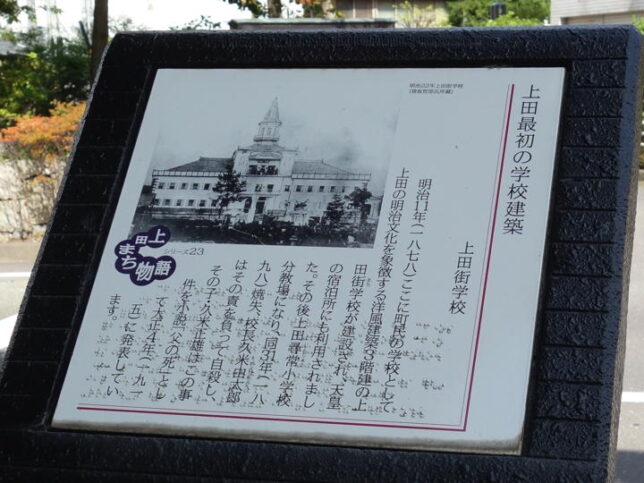
An article was published in the Shinano Mainichi Shimbun (March 29) at that time.
“At 10:50 pm the night before yesterday, a fire broke out at Ueda Girls’ School and one building was completely burned down.
Fortunately, there was no wind on the same night, so it was quiet, the fire was extinguished at 1:30 am the next day without spreading the fire to other classrooms such as the gymnasium. “
“After extinguished the fire, Mayor Baba immediately held an emergency town meeting to consider countermeasures ….
Temporarily allocated the gymnasium and town meeting hall to the classroom, and rented a part of Tokiwagi School. And it decided to spend 1500 yen as equipment purchase costs and repair costs."
This building, which was burnt down, was built as Uedamachi School in 1878, and was the place where it was used as the lodging of the Emperor Meiji. The fact that it was burnt down caused a great deal of commotion, and with the addition of rumors that the “Goshin-ei" (the photo of Emperor and Empress) was burnt, some people were extremely high and rampaged into the principal’s house. The history of Ueda City, published in 1940, states, “One day before dawn, some people threw explosives in the principal’s house."
Under these circumstances, Kume became keenly aware of his responsibility and committed suicide on March 30.
Yoshitaro Kume was born in 1853.
He graduated from Tokyo Normal School and was appointed as a teacher in Fukushima Prefecture in 1874. After that, he moved to Nagano prefecture by being invited by Nose Sakae, the director of Nagano prefecture normal school.
After working at several schools, he became principal of Ueda Higher Elemenrtary School in 1895.
In 1897, Kume proposed to the mayor to set up an English course and a sewing course in the school. Both the English course and the sewing course were approved by Nagano Prefecture during the same year.
He has also proposed to teach children who dropped out of elementary school at night.
As the principal, he sends a letter entitled “Requests for Homes" to each family and states his thoughts.
“First, school is not just a place to teach literacy abacus. Please think it is a place to lay the foundation for becoming a full-fledged person in the future." In addition, 25 items such as “reviewing lessons every day" and “helping with housework" are described. His last sentence was, “If you have a chance, please come to school from time to time to see what your children are doing."
“Goshin-ei" burned down?
There was a rumor that Kume decided to commit suicide because he couldn’t prevent “Goshin-ei" (the photo of Emperor) from burning down.
Masao Kume (1891-1952), the son of Yoshitaro Kume, wrote about “Goshin-ei" in his novel “Father’s Death" [first published in 1916], so it is no wonder that such story was told as if it was true.
Since then, it has been treated as a “good story" before the war, and as a “dark shadow before the war" after the war.
However, the newspaper article at that time did not mention “Goshin-ei", and it did not appear in the minutes of the Ueda Town Council held after the fire. Later, there was also a testimony from an old man in the area, saying, “At that time, “Goshin-ei" was at main school, so it must not have been at this school, which was a branch school." (“Talking about the old days of Ueda" published in 1953)
Masao Kume himself was 6 years old at the time of the fire. His father didn’t tell him why, and he probably later wrote a novel based on the rumors around him.
Currently, there seem to be many negative opinions about the burning of “Goshin-ei". Also in “the history of Ueda City" published in 2003, it was written as “rumor".
I think that the rumor of “Goshin-ei" came out because Ueda Elementary School was bestowed the Emperor’s photo in March 1893, five years before the fire. (In January of the following year, the Empress’s photo was bestowed.)
In order to find out what the “Goshin-ei" was treated at that time, a search for the Government Gazette about “Goshin-ei" in the National Diet Library Digital Collection began to show the description “Bestowing of Goshin-ei" from 1888.
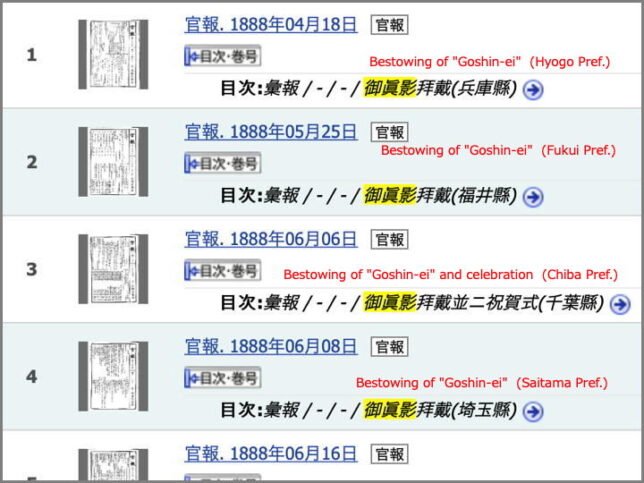
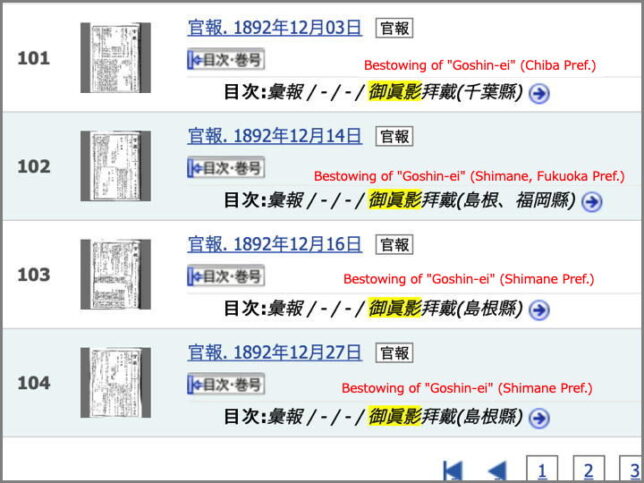
But it only appeared in the search until 1892, I couldn’t find it after 1892. Therefore, I could not confirm in the Government Gazette about bestowing of “Goshin-ei" in Ueda in 1893.
Therefore, I will post an image of the Government Gazette of December 1892. Looking at this and other cases, it seems that the ceremony was always held. In some cases, school staff, village chiefs, students and parents joined the procession, and the national flag was displayed at each household.
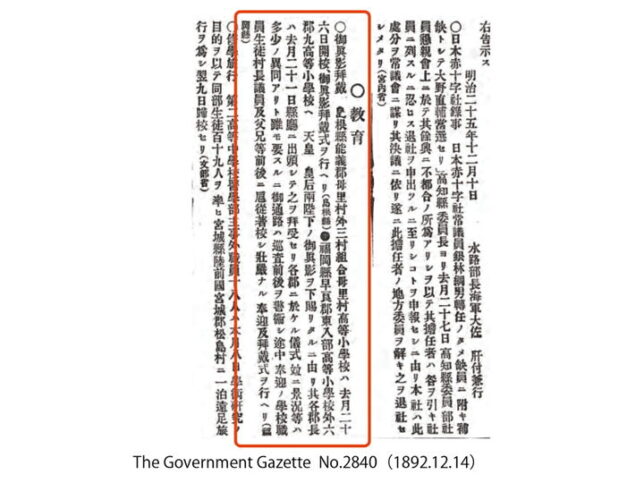
The above Government Gazette states the following. (Inside the red frame)
education
The bestowing of “Goshin-ei"
Mori-village Higher Elementary School, Nogi County, Shimane Prefecture was opend 26th last month, and the ceremony of bestowing of “Goshin-ei" was held.
The “Goshin-ei" (photos of the Emperor and Empress) were given to 9schools in 6 counties, including Higashiirube Higher Elementary School in Sawara District, Fukuoka Prefecture.
On the 21st of last month, each department manager appeared at the prefectural office and received it. There are some differences in the rituals in each county, but the procession is guarded by police officers, and school staff, village chiefs, village council members, and student parents walk in a procession, and after arriving at school, a solemn ceremony was held.
It was not possible to confirm the case of Ueda Elementary School in 1897 in the Government Gazette, but the ceremony was probably held and the ceremony was a memorable event for the townspeople.
I suspect that the memory may have led to rumors that “Goshin-ei may have burned."
However, reading the next story makes me confused again.
His son, Masao Kume, published “Son who is unworthy of his father" in 1923. According to the novel, Masao heard from a local person that his father’s death was caused by a conflict between school staff (a local teacher and Kume who came from outside), and “Goshin-ei" was used as an excuse.
I can’t confirm how true this is, but it seems Masao Kume himself feels a little relieved because he felt that “the burning down of Goshin-ei was not the number one cause of his father’s death."
However, with this, it became unclear whether the rumor of the burning down of “Goshin-ei" was natural or intentional.
This is the end of the story of ”Goshin-ei", because even if I think about it, it will not be solved.
From Ueda City History
An article about Yoshitaro Kume was also written in “History of Ueda City" published in 1940 before the war.
The article is a 16-line description, and the content is that he was suicide after the fire of the school building, and that “the noble spirit that took responsibility for himself deeply impressed the people of the world." I thought it was an evaluation by prewar values.
In 2003, another “Ueda City History" series was published.
In the books, Kume’s achievements in the field of education in Ueda, such as proposals for English education and repair education, and letters to parents, are highly evaluated.
The final closing was the following sentence.
“Yoshitaro died unfortunately while he was active as a pioneer in Ueda’s educational world. It was a regrettable death of an educator."
At the end
The last is a map. In front of the Ueda Chamber of Commerce and Industry, a map of the old Ueda castle town is erected. It seems to have been built a few years ago.
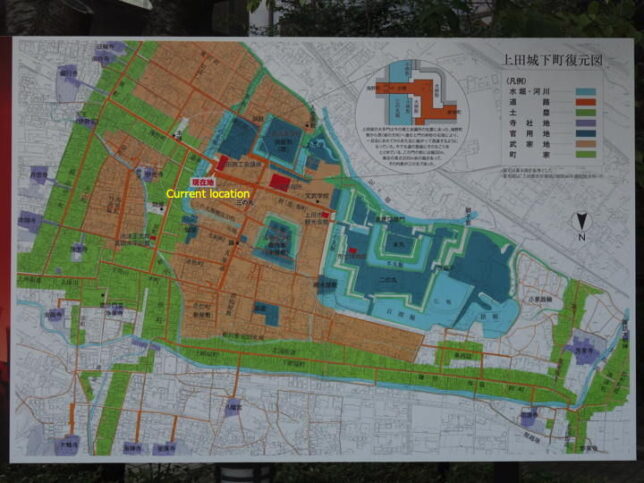
The building of the Ueda Chamber of Commerce is painted red next to the “current location" on the map. From 1878 to 1898, the Uedamachi School building existed here (although the name was changed).
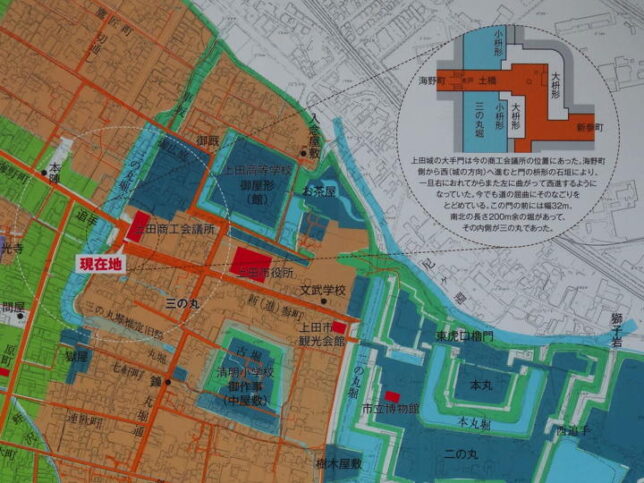
In 1899, the year after the fire, Ueda Higher Elementary School was dissolved and became an independent school, divided into both men and women. From April of the same year, it started as Ueda Municipal Men’s Higher Elementary School and Ueda Municipal Women’s Normal Higher Elementary School.
【reference】(all books were written in Japanese)
“History of Ueda City" (written by Naoe Fujisawa, edited by Ueda City, 1940)
“Ueda City History : History of School Education" (Ueda City History Committee Edition, Ueda City / Ueda City History Publishing Association, 2003)
“Ueda City History : The People of Ueda" (same as above)
“Teachers Martyred by the Goshin-ei" (Tsutomu Iwamoto, 1989, Otsuki Shoten)
(Translated : 2021.03.26)
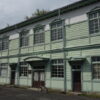
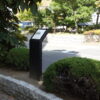
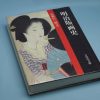
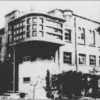
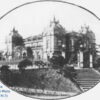
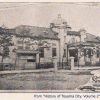
Recent Comments